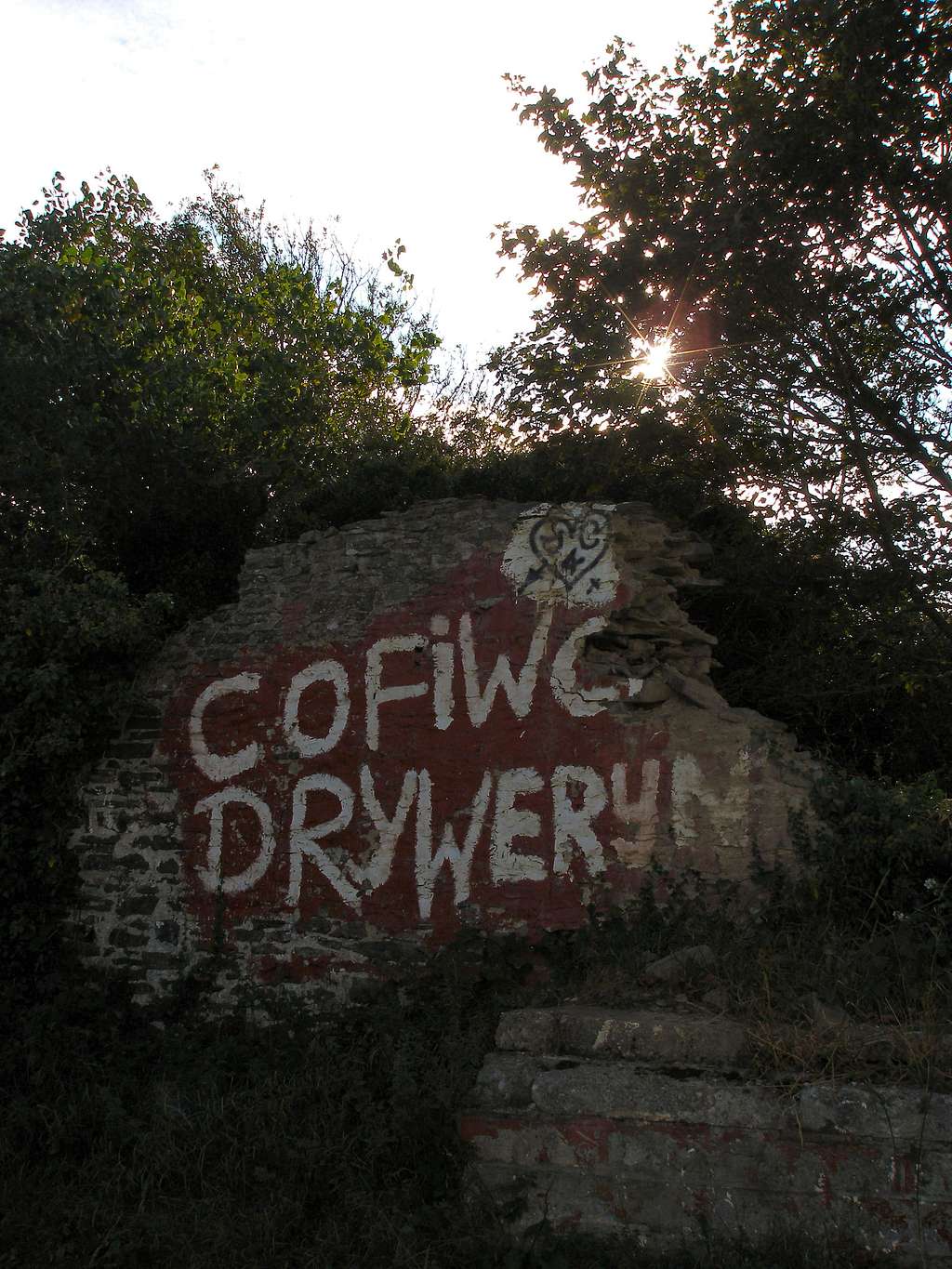Cofiwch Dryweryn

Cofiwch Dryweryn
This piece of protest graffiti on the A487 in Ceredigion commemorates the flooding of the Tryweryn Valley in Snowdonia, which drowned the village of Capel Celyn and displaced it's inhabitants. The graffiti is an important cultural landmark and well known in Wales. The creation of new lakes in Wales has never been particularly popular, and the damming of the river to create Llyn Celyn had repercussions that went beyond simple issues of water abstraction. The reservoir was constructed between 1960 and 1965 to support the water abstractions from the River Dee as part of the River Dee regulation system, and provide water for Liverpool and parts of the Wirral. Construction of the reservoir involved flooding the village of Capel Celyn and adjacent farmland, a move which evoked considerable anger since the village was seen as a stronghold of Welsh culture and the Welsh language, whilst the reservoir was being built to supply England. The legislation enabling the development was passed in 1957 despite the opposition of 35 out of 36 Welsh Members of Parliament, with the 36th not voting. The villagers waged an eight year campaign to save their village, unfortunately their efforts were in vain and when the valley was flooded in 1965, the village and its buildings, including the post office, the school, and a chapel with cemetery, were all lost. Twelve houses and farms were drowned, and 48 people of the 67 who lived in the valley lost their homes. The construction led to an increase in support in the Welsh nationalist party, Plaid Cymru, and sharpened debate within the party about the use of direct action. Plaid emphasised its constitutional approach to stopping the development, however some members frustrated with their inability to stop the development by attempting to sabotage the power supply at the site of the dam in 1962. A more serious repercussion was the formation of the militant group, Mudiad Amddiffyn Cymru (Welsh Defence Movement) or MAC, which blew up a transformer on the dam construction site in February 1963. MAC would carry out a number of bombings between 1963 and 1969, many of which were directed towards water and power infrastructure ;however they also bombed the Temple of Peace and Health in Cardiff's civic centre, a tax office in Cardiff, the Welsh Office building in the same city. In 1969 two members, Alwyn Jones and George Taylor, attempted to sabotage the investiture of the Prince of Wales by bombing the railway line at Abergele on which the royal carriage would travel, but were killed when their bomb exploded prematurely. In 1963 a second militant group, Byddin Rhyddid Cymru (Free Wales Army) were established in response the perceived lacklustre efforts of MAF. At the official opening, which took place on 21st October 1965, representatives of Liverpool Council were met by a Plaid Cyrmru protest as well as members of MAC and the FWA. The ceremony lasted less than 3 minutes, for protesters had cut the microphone wires, and the chants of the hundreds of protesters rendered the speeches inaudible.



